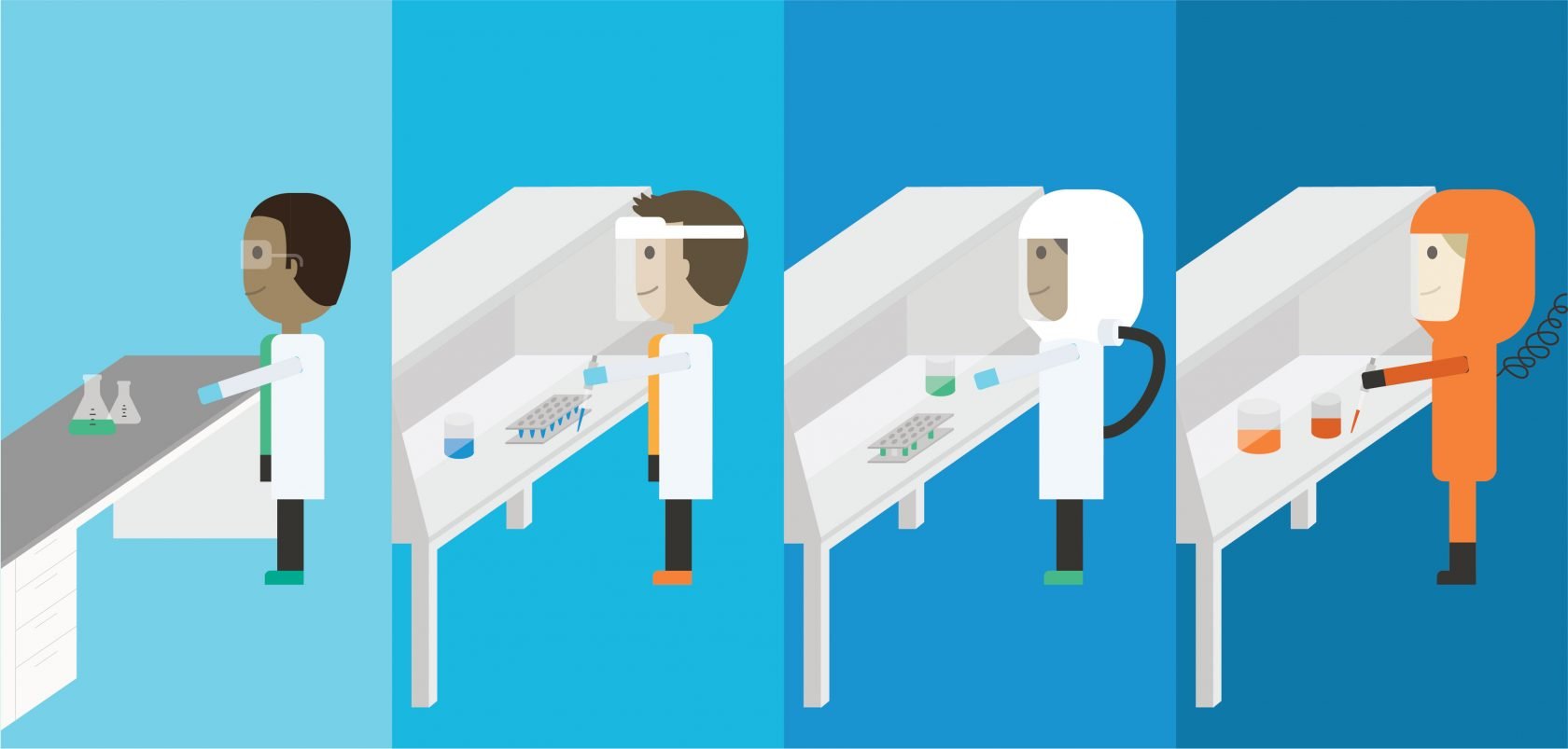1. NIOSH Lifting Equation + WISHA Lifting Calculator
The NIOSH Lifting Equation calculates the risks of lifting and lowering materials in the workplace. It provides a Recommended Weight Limit (RWL) determined by inputting a variety of data points like horizontal and vertical lifting requirements, distance an object must be carried, twisting or angular movement, among others.
Alternatively, the WISHA was developed as part of the Washington Industrial Safety and Health Act, and it’s based on research around work-related back injuries. It can be used as a quick calculation to help a designer determine if there is risk potential that should be investigated further.
To determine lifting risks and requirements, users identify the heaviest items they are responsible for moving in their environment. In a biology lab, this might include liquid media, buffer, and samples; in a chemistry lab, it might be volumes of caustic or flammable materials that must be moved from specialized containment for use in fume hoods. Designers can then use this information and the NIOSH Lifting Equation and WISHA Lifting Calculator to identify areas for improvement and find solutions to mitigate lab risks.
2. Rapid Upper Limb Assessment (RULA)
The RULA calculates the risk of loads placed on the neck, trunk, and arms. It’s particularly useful for determining the impact of repetitive movements.
Pipetting, manipulations inside biosafety cabinets, and tissue slicing are just a few laboratory examples where RULA calculation would come into play. From observing a lab user perform the task, a designer can use the tools to score the required movements to identify the most risky tasks and make adaptations to improve ergonomics.
3. Snook Tables
These tables offer guidelines around weights or force for manual tasks (pushing, pulling, lifting, or carrying) that are acceptable for banded percentages of the population.
In the laboratory environment, users perform numerous push-pull operations involving equipment, vivarium racking, glassware carts, and waste drum disposal. Snook tables allow designers to understand the limitations that exist for different capabilities. A designer can study the materials and the handling equipment and make spatial and operational adjustments to identify risks in a laboratory and address areas of concern.
These tools are helpful, but they’re nothing without practical application. That means that designers must get real-world data from lab users to create an ergonomic design that will reduce lab risks by prioritizing safety, comfort, and productivity.
Gather user input to reduce the risks in a laboratory
A key part of the design process involves gathering intelligence and feedback from users. First-hand, day-to-day use can reveal not just the lab staff’s challenges, but also potential solutions. When renovating an existing lab, designers can observe the tasks and workflow being performed in the space to make informed decisions; however, when designing a completely new lab, you won’t get to observe users in the environment. Instead, you have to rely on what they’ve done in the past, and what they’d like to do in the new space. These are some of the ways to get lab users’ input:







